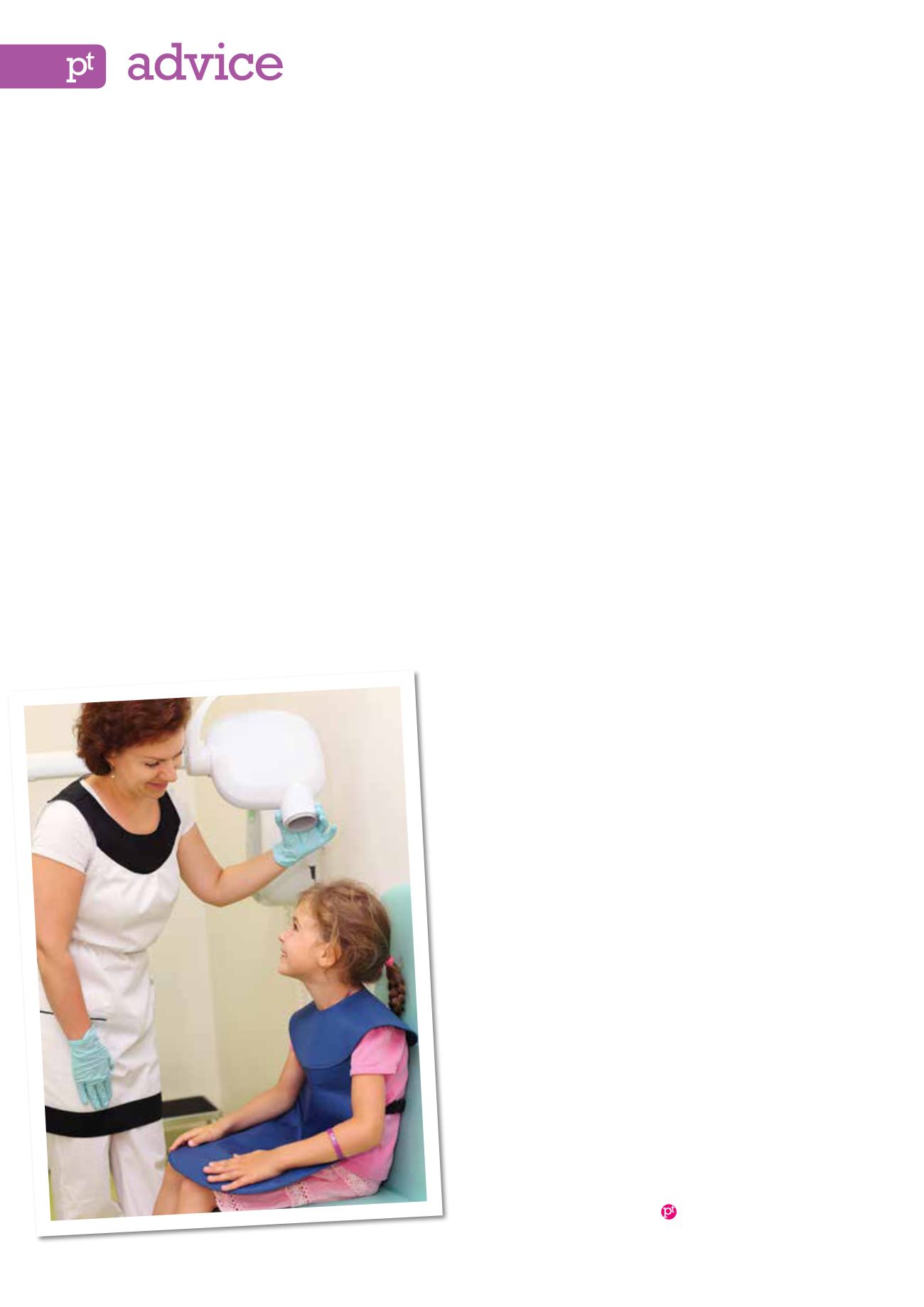
A trip to the dentist often involves a set of x-rays, but research has found that
having too many can pose a health risk.
Katrina Shute
finds out how to reduce
your child’s exposure to harmful radiation while ensuring teeth stay healthy.
W
e’ve all been there, sitting
in the dentist’s chair, fitted
with a lead vest, mouth
full of contraptions and
a whirring machine pointed directly at
your head. The nurse pops outside and
closes the door, and you wonder just
how much radiation is being absorbed
into your body.
Research from Yale University’s
Department of Public Health has found
possible links between frequent dental
x-rays and the formation of certain
benign brain tumours. Hong Kong
orthodontist Derek Baram says while
the results are not definitive, they are
concerning. “Too many x-rays are taken
routinely without much consideration
as to why it needs to be done,” he says.
“We have to ask ourselves whether the
benefits of the x-rays outweigh the risk.”
Dr Baram says the introduction of
digital technology in the past decade
has significantly reduced the radiation
dose per x-ray, thereby decreasing the
risk for today’s generation of children.
But, he warns, parents
should still be wary.
“Young children
are more prone to
radiation than adults
because they are
growing, their cells
multiply faster, and
their bones, skin and
other connective
tissues are thinner as
well.”
While x-rays can
be vital for ensuring
children’s teeth
are kept healthy,
or in preparation
for orthodontic
treatment, Dr
Baram suggests
parents ask their
practitioner to
ensure all x-rays
are clinically
justified. “Routine
x-rays to check
the development
of teeth is often
not good enough
for me,” he says.
“There need to be stricter guidelines
in Hong Kong, as many dentists and
doctors practise defensive medicine,
taking more x-rays just in case it picks
something up, even when the chance
of picking something up is really slim.”
European guidelines suggest most
children shouldn’t need dental x-rays
until age five at the earliest. If teeth are
healthy and there is no cause to suspect
decay, it’s recommended to take a
two- to three-year break between sets.
Only children identified as being at
“high risk” for problems should require
more regular imaging.
When your child does have an
x-ray, ensure they are wearing a lead
collar, known as a thyroid collar, to
maximise protection. A lead vest may
also be beneficial. It’s also better to limit
the number of x-rays taken at any one
time. For example, taking five x-rays
within one week poses more of a risk
than taking five x-rays over the span of
a year.
And while it’s not the first thing we
think about when it’s time to relocate,
make sure to bring your child’s x-rays
with you, or have the clinic forward the
images to your new dentist. It will reduce
the need for a whole new set being
taken unnecessarily. “This is a great
idea in the age of digital x-rays,” says Dr
Baram. “Films are difficult to duplicate
and can be expensive, but digital x-rays
are easy to store and obtain.”
Finally, don’t forget to follow the
same advice for yourself. In Hong Kong,
we are already exposed to higher levels
of radiation with regular air travel and
naturally occurring factors. Small steps
to limit overall exposure can make a big
difference.
Overexposure
28
Playtimes


